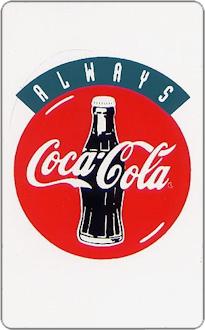Most of the minor (in the sense of number of telcos supplied) manufacturers employ magstripe technology of no startling originality but Brazil has developed its own technology which is quite unlike anything else currently in use in the world. This is inductive technology which operates on a totally different principle. To explain electrical induction, when a changing (e.g. alternating) electric current moves in a coil, it causes another current to move in any other electrical conductor within range of its electromagnetic field. This is the basis of induction heaters (your microwave oven for example) and transformers.
The Brazilian technology makes use of this effect to store units in a telephone card. Each card consists of a sandwich with 104 little thin film coils, a grid of 8 x 13, deposited onto an inner surface. The telephone contains a search coil which can sense the inductance in one of the coils within the card, look at it for a set period, and then blow it like a fuse by passing a short strong pulse of electricity. The cards are cheap to manufacture and reliable.
So far this technology has been used in Brazil, Bolivia, Paraguay, Samoa and China. A single card was made for Nicaragua and trials have been conducted in Belize, Nigeria and Mexico.
The system was invented by Nelson G. Bardini as long ago as 1978 and won a competition in Brazil in 1985. The first prototypes of this system were made in 1987 and were developed over the next four years. Trials took place in 1992 and the system launched in 1992 and early 1993. Initially cards were issued separately for 15 regions of Brazil by Telebras subsidiaries. Purists object to the term ‘regional cards’ because the cards were interchangeable between regions but then the Caribbean Series cards are interchangeable between Caribbean countries and are always assigned to their individual states.
These are satisfying cards to collect in that there are sufficient rare cards, especially the early regionals, to present a challenge but the Telebras cards are issued in printings of around a million so they are cheap. There is no visual difference between mint and used (except that mint are usually sealed in cellophane) and the designs are attractive. However there is plenty of scope for the specialist since they were made by at least three different manufacturers who always put their names on the cards. Sometimes all three made the same design, so you can find the same card made by lnterprint, ABN (American Bank Note Co.) or Casa da Moeda do Brasil (CDM).
Brazilian cards have one unique design feature – they have no arrow on them because it does not matter which way round they are when you insert them in the cardphone!

















